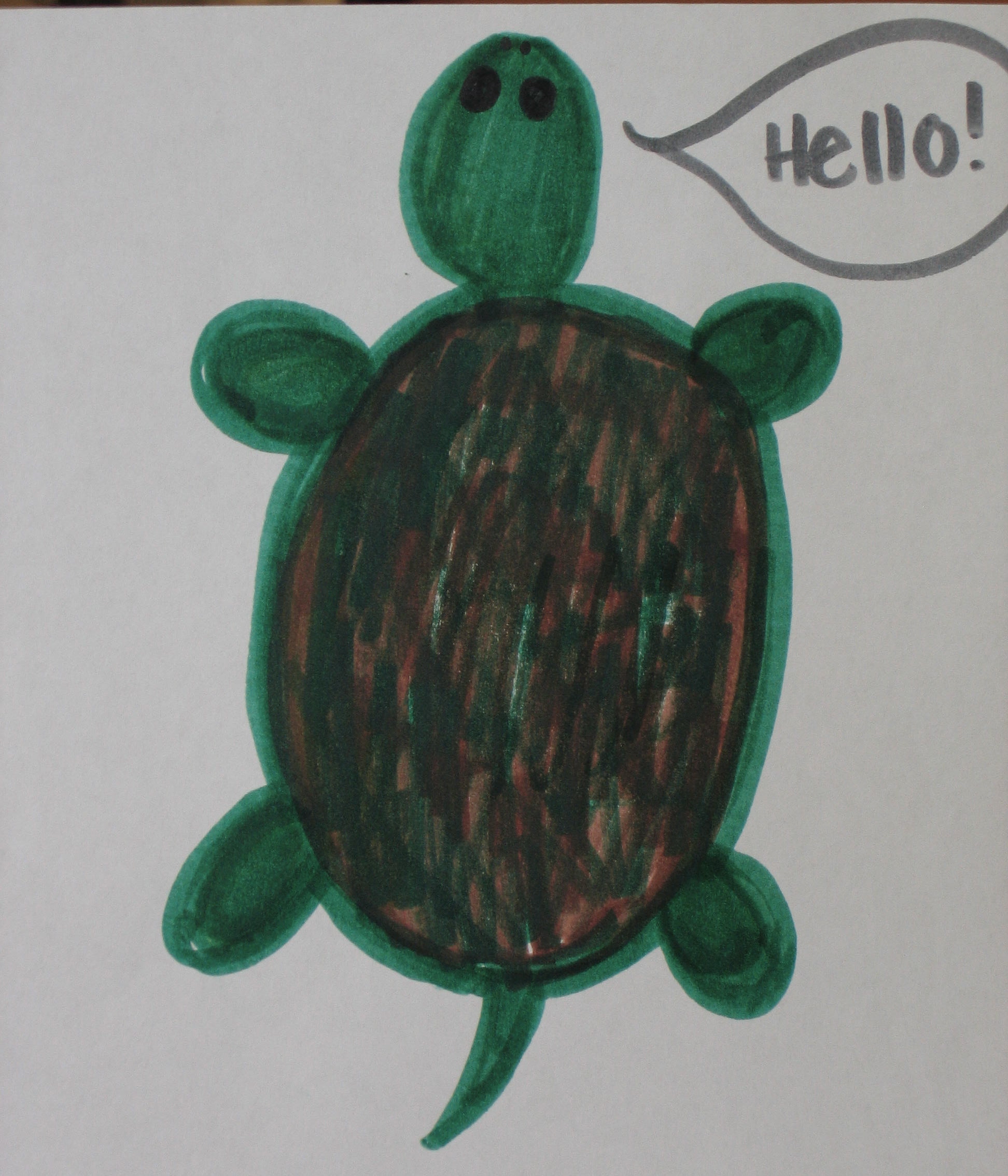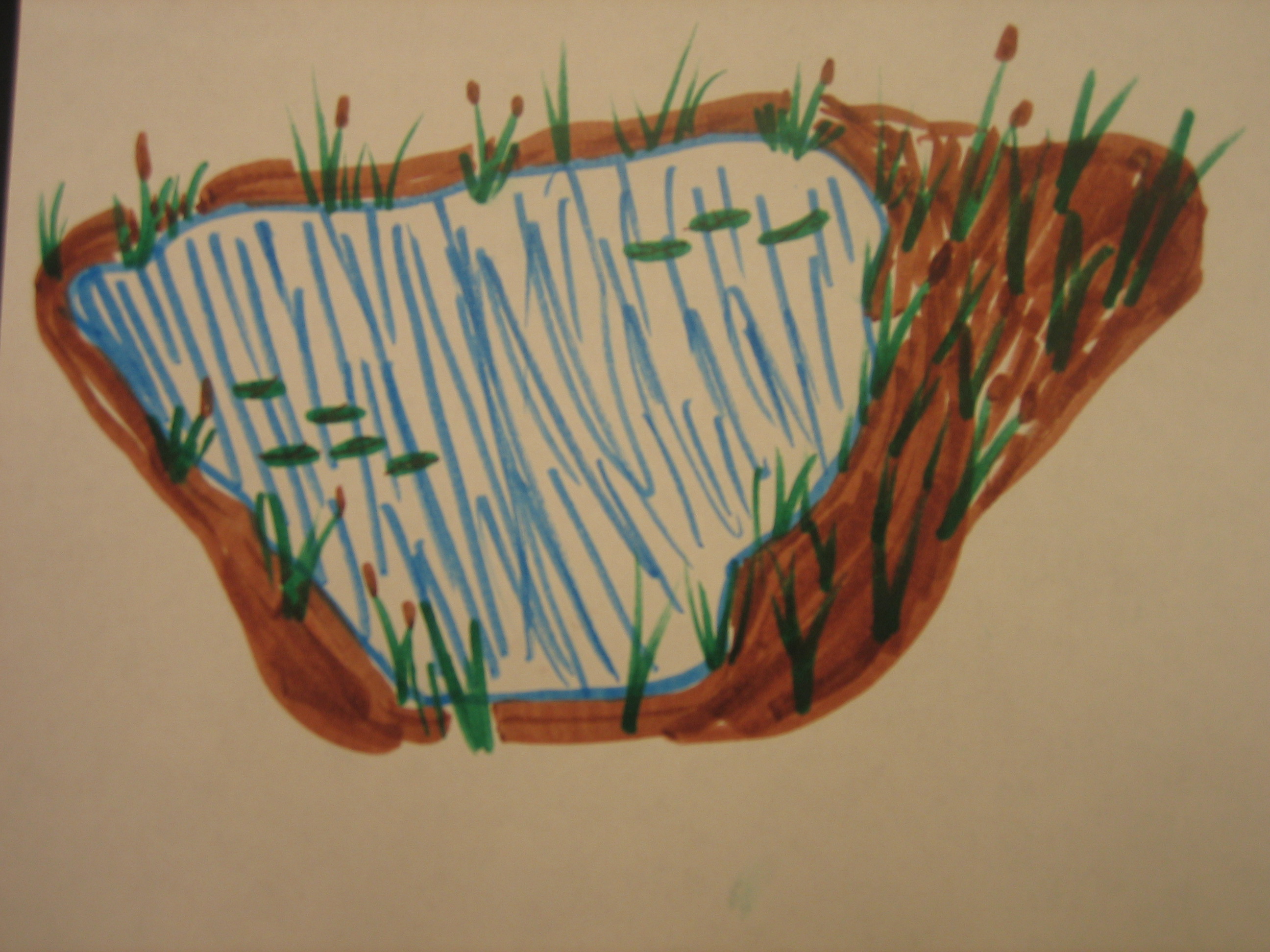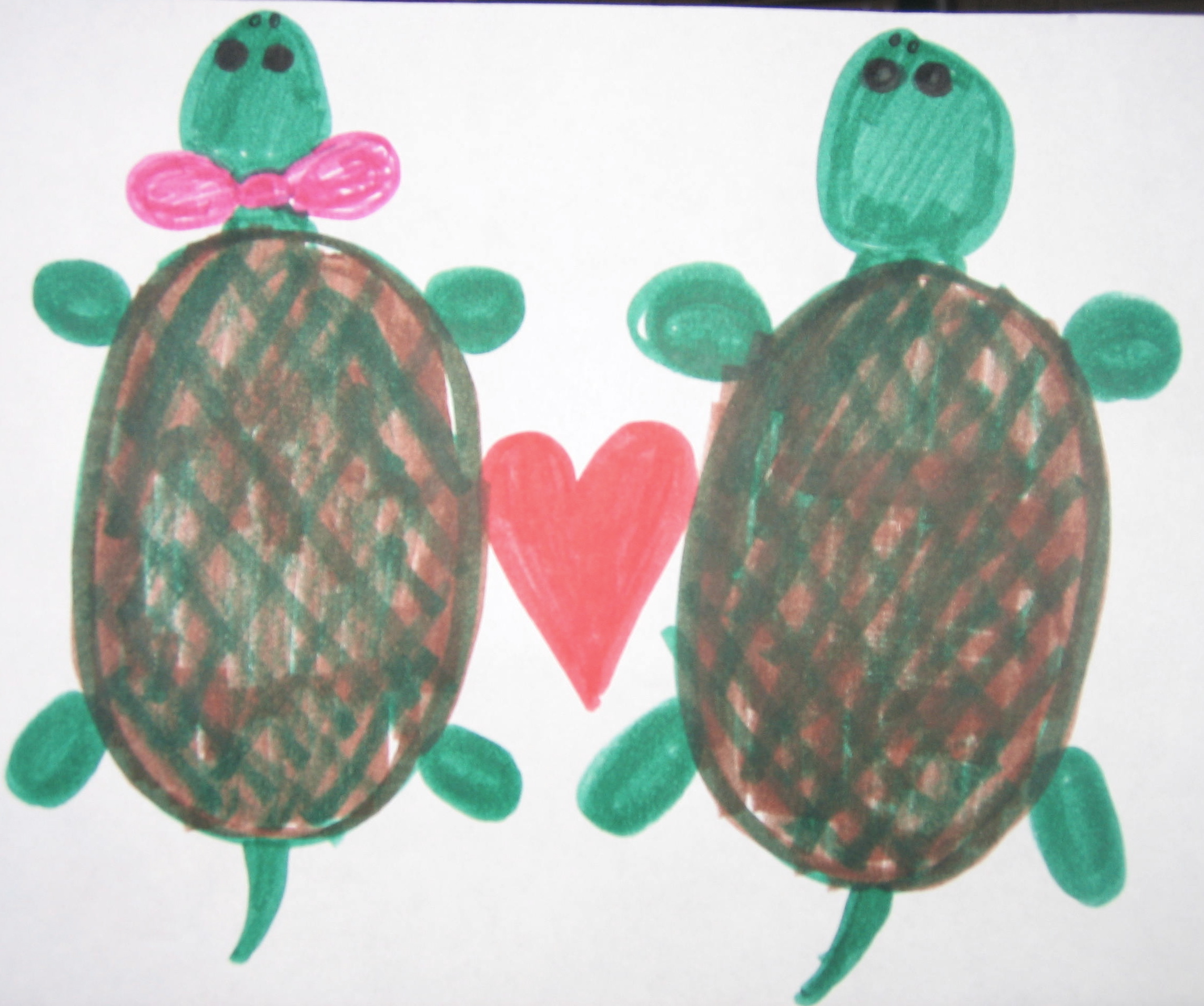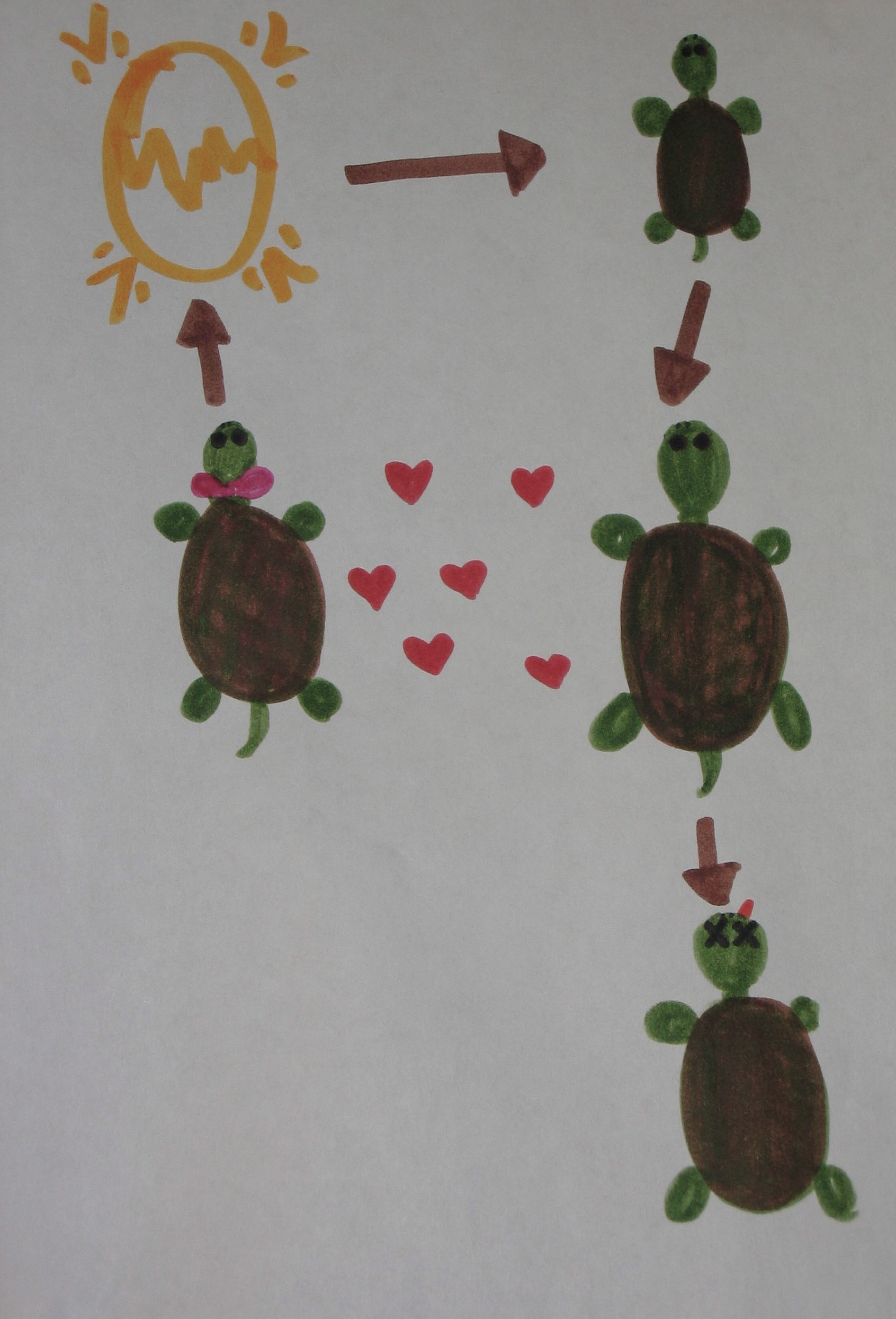 Portfolio: Havergal College Student Treehouse Portfolio
Portfolio: Havergal College Student Treehouse Portfolio
Story
Bob the Snapping Turtle
turtle1

Click on an image to view larger version & data in a new window

© turtle1
Meet Bob
This is a Snapping Turtle, his real name is Chelydra Serpentina, but you can call him Bob. Right now Bob is 20 years old, but he can live up to 40 years! Bob is a large turtle and has a mass of about 12 kilograms, and he is 35 centimeters in length. Bob has a large head, muscular limbs and claws, with a long neck and tail. His shell is dark brown, but it can look green because of the alga that grows on it. Bob’s body is a yellowish colour but can be brown or black. His body is so big that he cannot fit into his shell.
Bob can be mean sometimes and will lunge out and bite with his powerful jaws and beak- but only when he is out of the water. When he is on land he cannot hide in his shell or move very fast because he is simply too big, so he has to be aggressive to survive. He is happiest in the water and is calm and nice. If people approach him he will just swim away.
Bob has a big appetite, even though he has no teeth! He likes to eat yummy fish, birds, aquatic plants, snakes, insects, frogs, and small mammals.

Click on an image to view larger version & data in a new window

© turtle1
Habitat and Importance to Ecosystem (Bob’s Home)
Bob’s family lives from southern Alberta to Nova Scotia and from the Gulf of Mexico to Texas. They live in fresh water with lots of mud and vegetation for them to hide in and eat. Bob is important to his home because he makes sure that the fish, amphibian, insect, and reptile population do not take over the pond! (By eating them!!)

Click on an image to view larger version & data in a new window

© turtle1
Specific Adaptations to the Environment (What Bob does to Stay Alive)
Life is not always so easy for Bob. Sometimes he has to bury himself in the mud to sneak up on his food. His mom laid him in his egg on a sandy shore close to the water so that he could quickly get into the water before he could be eaten by a crazy crow, or a stinky skunk.

Click on an image to view larger version & data in a new window

© turtle1
Reproductive Characteristics (Bob’s in Love!)
Bob can be lonely in his pond so sometimes he and his girlfriend, Belle have babies. They mate between April and November. Bob’s girlfriend can lay up to 83 eggs in a sandy hole… before she returns to the waters. In little more than nine to eighteen weeks later, little snapping turtles crawl out of their eggs and into the pond without any help from their mommy.

Click on an image to view larger version & data in a new window

© turtle1
Life Cycle (Bob’s Life)
Bob's life started 20 years ago when Bob hatched out of the egg along with his brothers and sisters. Life was tough for Bob from the moment he broke out of his shell; he had to dodge other large turtles, great blue herons, crows, raccoons, skunks and foxes just to reach the water. There, poor, vulnerable Bob had to brave bullfrogs, water snakes and big fish such as the largemouth bass. After a few years, Bob was ready- he was NOT to be bossed and bullied around any longer! Somewhere along the way, he met Belle, the Snapping Turtle of his dreams. (It was love at first snap.) He and Belle have had quite a few hatchlings now who will grow up, mate, and have more hatchlings. (A snapping turtle can never have “too many” hatchlings as some are eaten or die before they reach maturity at the age of 18.) With luck, Bob and Belle will be proud grandparents. When the time comes, Bob will go to turtle heaven and possibly meet his mommy and daddy there.

Click on an image to view larger version & data in a new window

© turtle1
Bob Says Goodnight!
Bob’s happy that you wanted to know all about him, but it’s been a long, long day and he feels sleepy. Bob will sleep in his pond now. Goodnight!
References
1) Bosch, A. 2003. "Chelydra serpentina" (On-line), Animal Diversity Web. Accessed October 3, 2005 at
http://animaldiversity.ummz.umich.edu/site/accounts/information/Chelydra_serpentina.html.
2) Ducey, Peter. "Turtle Key." Cortland Herpetology Connection. State University of New York College at Cortland. 5 Oct. 2005 .
3) "Snapping Turtle." Enchanted Learning. 5 Oct. 2005
.
4) "Chelydra serpentina." Rickert's Garden. 21 Dec. 2001. 7 Oct. 2005 .
5) Collins, J.t. "Chelydra serpentina serpentina." ITIS Report. 1990. 7 Oct. 2005 .
6) Sullivan, John, “Index by Scientific Name” Available Online: www.wildherps.com/indexes/sciIndexA-C.html
7) Unknown Author, “Snapping Turtle” Available online: www.nature.ca/notebook/english/snapper.htm
8) Unknown Author, “Snapping Turtle” Available Online: http://museum.gov.ns.ca/mnh/nature/turtles/snap.htm
9)Unknown Author, “PA Reptile Family Tree” Available Online: http://sites.state.pa.us/PA_Exec/Fish_Boat/anglerboater/ja02angler/repliletree.pdf
10) Unknown Author, “Snapping Turtles” Wikipeda encyclopedia Available Online: http://en.wikipedia.org.wiki.chelydridae
Learning Information
Page Learning Information
- ToL Learner Level:
- Target Grade/Age Level:
- Additional Treehouse Type:
Portfolio Learning Information
- ToL Learner Level:
- Target Grade/Age Level:
- Additional Treehouse Type:
- Art and Culture;
- Fun and Games;
- Investigation;
- Story
- Comments
- These treehouses provide fun and educational ways to learn about many different organisms. There are many stories that incorporate information about organisms in a way that is widely accessible to learners, and many stories include comprehension questions. The games and arts and crafts activities are geared toward learning about the organism featured in the page. Some of the students state that their treehouses are meant to be learning materials for students in grades 5-8.
About This Page
Author: turtle1
Classroom Project: Turtle
Havergal College
Toronto, Ontario Canada
License: Tree of Life & Partners uses only - Version 1.0
Correspondence regarding this page should be directed to , Havergal College
Page copyright © 2005 turtle1
 Treehouses are authored by students, teachers, science enthusiasts, or professional scientists. Anyone can sign up as a treehouse contributor and share their knowledge and enthusiasm about organisms. Treehouse contributions are checked for general accuracy and quality by teachers and ToL editors, but they are not usually reviewed by expert scientists. If you spot an error, please get in touch with the author or the teacher. For more information about quality control of Tree of Life content, see Status of Tree of Life Pages.
Treehouses are authored by students, teachers, science enthusiasts, or professional scientists. Anyone can sign up as a treehouse contributor and share their knowledge and enthusiasm about organisms. Treehouse contributions are checked for general accuracy and quality by teachers and ToL editors, but they are not usually reviewed by expert scientists. If you spot an error, please get in touch with the author or the teacher. For more information about quality control of Tree of Life content, see Status of Tree of Life Pages.
About This Portfolio
The ToL really appreciates the efforts of these teachers and students. Havergal College has produced some of the first treehouses created by students and we think they did a terrific job.
Special thanks to Seonaid Davis, the coordinator of this project at her school, for becoming one of the first teachers to use the ToL's treehouse publishing system, and for inviting other teachers at her school to do so also. Nice work!
Lisa Schwartz

University of Arizona

Havergal College
Sarah Ianni

Havergal College
Kate Rowlandson

Havergal College
Correspondence regarding this page should be directed to Lisa Schwartz at , Seonaid Davis at , Sarah Ianni at , and Kate Rowlandson at
Page copyright © 2005 Lisa Schwartz, , , and



 Go to quick links
Go to quick search
Go to navigation for this section of the ToL site
Go to detailed links for the ToL site
Go to quick links
Go to quick search
Go to navigation for this section of the ToL site
Go to detailed links for the ToL site